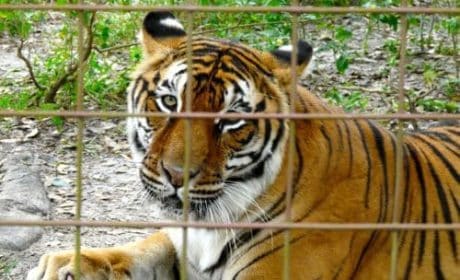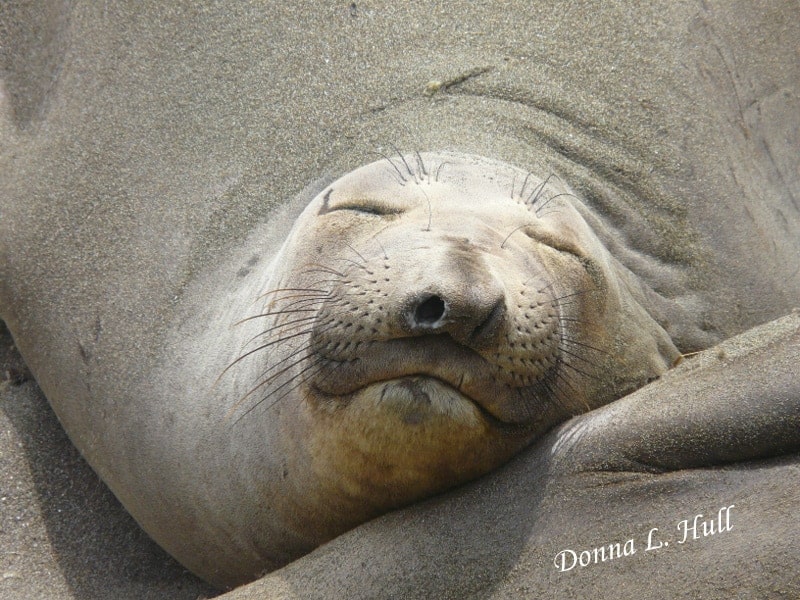Would you like to go whale watching in the San Juan Islands? Follow along as guest contributor, Shaly Pereira from traveltoes85, takes us on a beautiful adventure around the Orca trail in the San Juan Islands off Washington State.
In January 2017, Tilikum, the oldest orca whale in Sea World died of a lung infection. Tilikum had spent 33 years of his life in captivity, entertaining millions of visitors at Sea World. He was the perfect example of a magnificent animal captured by man, separated from his family and used for entertainment.
I recently visited the San Juan Islands and found various reminders of Tilikum in Friday Harbor put up by whale lovers. In a coffee shop here, at a portion of the wharf there, on a beautiful schooner—all keepsakes in memory of the famous Orca.
According to Jeffery Venter, a marine trainer, “San Juan Island is the unofficial home of Blackfish,” the much acclaimed CNN film that brought the plight of captive whales to the forefront.
Table of Contents
Cruising on the Orca trail in the San Juan Islands

Belonging to the United States and located in the State of Washington, the San Juan Islands are picturesquely embedded into the Northwestern landscape between Puget Sound and Vancouver Island in British Columbia, Canada. The Pacific Ocean—deep and mysterious—holds this archipelago in its bosom, nurturing in its depths, a vastly diverse marine life.
Orca sightings are common in these waters from March through October. Various cruises and speed boats report the sightings over the radio to each other.
Two types of whales inhabit this island chain— the Transient Orcas—small family pods that travel over a large area between Alaska and the Californian coast to hunt for seals and sea lions.
The islands also host Resident Orcas that travel in specific areas in larger groups and feed on salmon. From spring through summer, they spend their time here feeding on the Chinook salmon that migrate to these waters to spawn.
When it hunts small marine animals for food, the Orca practices an instinctive predatory method, thus gaining for itself the name Killer Whale. Towards humans, it is gentle and curious. In fact, humans are the greatest threat to its existence.
The Orcas of San Juan Islands are free, beautiful and belong in the vast expanse of the ocean, surrounded by their family members. An artificial tank, no matter how big can never be a replacement for the ocean, the Orca’s rightful home. This fact is glaringly obvious to anyone who watches them in the wild.
How to get to the San Juan Islands from Seattle

Depending on your place of stay, you can either walk, drive or take an Uber to the Ferry Terminal Pier 69 on the Seattle Waterfront. The San Juan Clipper, which offers high-speed catamaran service between Seattle, Victoria, British Columbia and the San Juan Islands, is docked here.
This is the only whale watching cruise that leaves directly from downtown Seattle. There are smaller cruise boats that offer whale watching tours from San Juan Island harbors.
A round-trip ticket fare on the San Juan Clipper includes whale watching for two hours. All food and drinks can be bought at the restaurant on board. Tip: On the return journey, food is sold at less than half the original price.
San Juan Islands whale watching itinerary
Departure from Pier 69: 8:15 AM
Arrive Friday Harbor: 11.45 AM
Whale & Sea-life Search: 12 PM to 2.30 PM (On our trip, the whale watching time was reduced by an hour—we were told the whales were sighted earlier than expected. Personally, we would have preferred to spend that hour watching whales rather than exploring Friday Harbor.
Friday Harbor: 2:30 PM to 4:40 PM (Plus one hour)
Depart Friday Harbor: 6:00 PM
Arrive Seattle: 8:45 PM
On board the Yankee Clipper

The ferry has two lower decks and an uppermost top deck. Indoor seating is comfortable and passengers can freely walk about on the decks. The lower back deck is not only less crowded but also less windy—definitely more suited for tripods and cameras.
Apart from the aptain and the crew, there is also a qualified naturalist on board who gives the passengers location specific commentary. The naturalist also shares information on Orcas and other wildlife such as birds, sea lions, harbor seals, and otters.

As the vessel cruises in the waters of the Salish Sea, stunning sights are guaranteed throughout the journey, including long views of the Cascade Mountains and the Deception Pass. The return route differs and passes alongside the Strait of Juan de Fuca that separates the United States from Canada. On the other side of the border lies Vancouver Island.
Whale Watching from the boat

We watched transient Orcas dive and swim in full sight of the boats that surrounded them. They seemed to be unafraid and definitely curious as they swam alongside and watched the people watching them.

At one point, they massed together at a distance, diving in deep and surfacing periodically and then diving in again. Our naturalist explained that the orcas had circled prey and were honing in for the kill underwater.
All Orcas display typical whale behavior—tail lobbing (slapping the tail on the water surface), breach (jumping in an arch and landing on its back or side) and the much rarer spy hopping (popping its head over the surface with the body in a vertical position.)
The whales call out to each other in a series of calls that are unique to each particular pod. Speaking for the whales, the Marine Wildlife Laws and Guidelines encourage boaters, paddlers, and viewers to be Whale Wise.
It was my first time watching Orcas in the wild. The experience was deeply rewarding, peppered with liberal doses of guilt.
I felt mortified that I had watched these beautiful animals performing silly tricks at Sea World in San Diego and later at Ocean Park in Hong Kong. Never Again, I promised myself, joining the ranks of travelers around the world, who after being similarly moved, are now staunch supporters of wildlife conservation.
Exploring Friday Harbor

Once the whale watching is done, the clipper drops you off at Friday Harbor which lies to the north of San Juan Islands.
As soon as our clipper was docked, everyone made a beeline for the famous Friday Harbor Ice Cream place on the island. By the time we reached it, the line was a mile long.
Fortunately, there are many eateries in this charming town (here’s a list) all within walking distance of each other. You have to compete with other travelers to get a spot, but once you do, it’s totally worth it.
If you want to explore the island, there is a moped renting place called ‘Susie’s Mopeds’ on Nicholas street, about two blocks walking distance from the ferry stop. It rents out mopeds, electric bikes/cars and cute 2-seater Scoot Coupes with a maximum speed limit of 30 kph.
The coupe is double the price of mopeds for one-hour rental.
Another fun activity would be to attend the Lavender Festival which is held every year in the third week of July at the Pelindaba Lavender farm. It’s a little way out in the country so you need time and a vehicle to get there. Best time to visit is between mid-July to mid-August when the flowers are in full bloom.
I walked through the streets of Friday Harbor, ate in a couple of restaurants and explored a beach route on the Scoot Coupe, and all this time, I became intensely aware of one all important fact – it’s all about the Orcas here.
Three cheers to that!

As I got in line to board the Clipper and finally sailed back to Seattle, the sun set lazily over the horizon, casting a golden glow over the frothy wake of the boat. I gazed in awe through the lens of my Nikon, greedy for that one last shot.
Somewhere in the distance, in the silvery blue waters of the Pacific Ocean, I glimpsed the spirit of Tilikum gracefully breaching in a perfect arch and silently disappearing beneath the surface—free at last.




